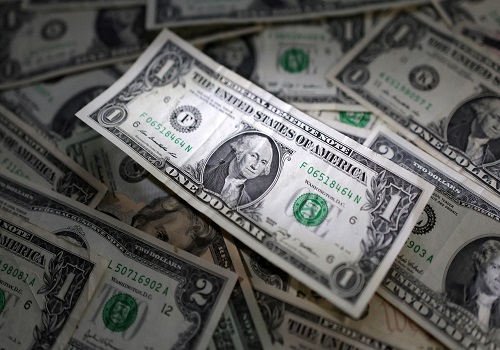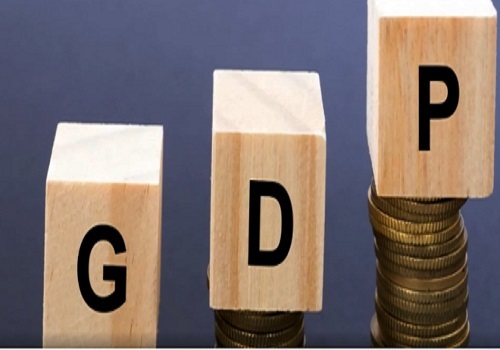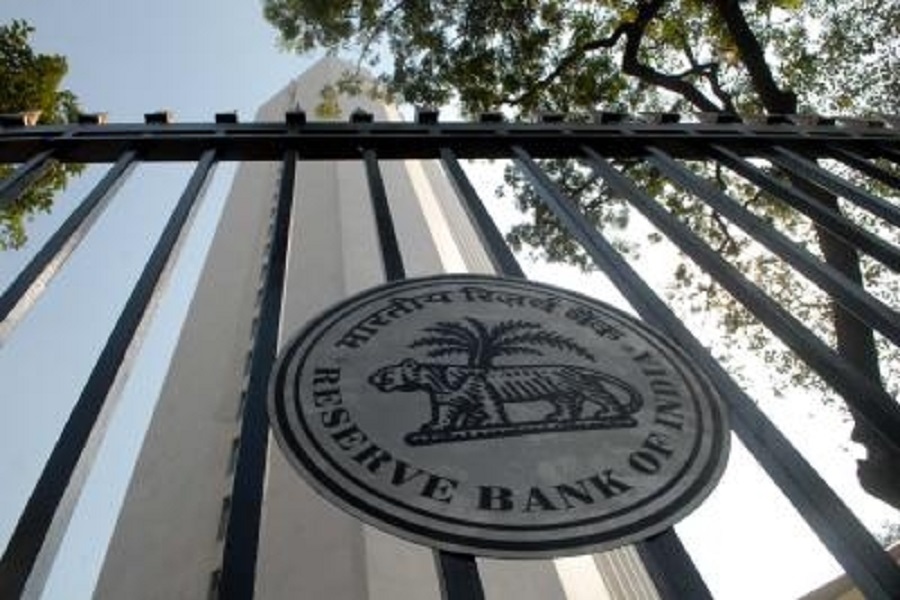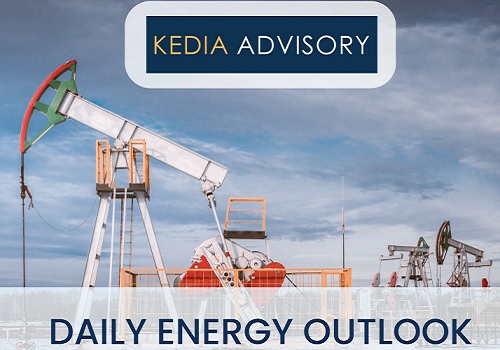Zinc trading range for the day is 245.6-255.8 - Kedia Advisory

Gold
Gold surged by 1.91% to settle at Rs.100,276 as heightened geopolitical tensions in the Middle East, particularly Israeli airstrikes on Iran, triggered strong safe-haven demand. Israel’s targeting of Iran’s nuclear and military infrastructure has raised fears of a prolonged conflict, leading investors to flock toward gold. U.S. President Donald Trump blamed Iran for the escalation, citing its resistance to a U.S. ultimatum on nuclear restrictions. Additionally, softer U.S. inflation data strengthened expectations of interest rate cuts by the Federal Reserve, further supporting gold prices. Major institutions have turned increasingly bullish, with Goldman Sachs projecting gold to reach $3,700/toz by end-2025 and $4,000 by mid-2026. Similarly, Bank of America sees potential for a rally to $4,000/oz within the next 12 months. However, elevated domestic prices in India, crossing the crucial Rs.100,000/10g level, weakened physical demand and led to the highest discounts in seven weeks—up to $63/oz. According to the World Gold Council, global gold demand rose 1% YoY to 1,206 metric tons in Q1 2025, driven by a 170% surge in investment demand, particularly in ETFs and gold bars. Conversely, jewelry demand fell 21% amid high prices, and central bank purchases declined by 21% to 243.7 tons. Technically, fresh buying is evident with open interest rising 11.19% to 17,267. Gold now finds support at Rs.99,620, with further downside potential to Rs.98,965. Resistance is seen at Rs.100,805, and a breakout above could push prices toward Rs.101,335.
Trading Ideas:
* Gold trading range for the day is 98965-101335.
* Gold on MCX crosses 1 lakh mark as safe-haven demand spiked after Israeli airstrikes on Iranian military and nuclear targets.
* The strikes reignited fears of a prolonged Middle East conflict, driving investor risk aversion.
* Gold could hit $4,000/oz in next 12 months, says BofA
Silver
Silver prices edged higher by 0.57% to settle at Rs.106,493 amid intensifying geopolitical tensions and persistent global economic uncertainty. The safe-haven rally gained momentum after Israel launched a preemptive strike on Iran, reigniting fears of a broader Middle East conflict. Israeli Prime Minister Netanyahu confirmed the attack targeted Iran’s nuclear program, while tensions were further stoked by U.S. President Donald Trump’s threat to impose new tariffs, despite a potential extension of the current 90-day pause. Beyond its safe-haven appeal, silver remains underpinned by strong industrial demand and structural supply shortages. The metal plays a critical role in solar power, electronics, and electrification technologies, which together account for over 50% of global demand. According to the Silver Institute, silver is poised to see its fifth consecutive annual deficit in 2025, projected at 117.6 million troy ounces. Though the deficit will narrow 21% from the previous year, it remains significant due to stable industrial usage and revived physical investment demand. Silver industrial fabrication is expected to grow 3% and cross 700 million ounces for the first time, driven by green economy applications. Physical investment demand is forecast to rise 3%, particularly in Europe and North America. Technically, the market is under short covering as open interest dropped by 3.01% to 17,363 while prices rose Rs.608. Support is seen at Rs.105,820, with further downside potential to Rs.105,150. Resistance lies at Rs.107,050, and a breakout above could push prices to Rs.107,610.
Trading Ideas:
* Silver trading range for the day is 105150-107610.
* Silver gains amid heightened geopolitical tensions following Israel’s strike on Iran.
* Uncertainty over U.S. trade policy added to market anxiety, with President Trump threatening new unilateral tariffs.
* Silver faces its fifth consecutive annual supply deficit, though the Silver Institute expects a 21% narrowing in 2025.
Crude oil
Crude oil prices surged 7.55% to settle at Rs.6,285, driven by escalating geopolitical tensions after Israel launched a strike against Iran. The heightened risk of regional retaliation and conflict has raised fears of potential supply disruptions, particularly through the Strait of Hormuz, which handles roughly 20% of global oil trade. Israel's declaration of a "special situation" and Iran’s threats against U.S. bases prompted partial evacuations of U.S. personnel, adding to the risk premium in oil markets. On the fundamental side, U.S. crude inventories dropped more than expected by 3.644 million barrels in the week ending June 6, according to the EIA, indicating strong domestic demand. However, gasoline and distillate inventories rose, suggesting a mixed demand outlook in refined fuels. Meanwhile, softer U.S. inflation has strengthened the case for interest rate cuts by the Federal Reserve by September, potentially boosting economic activity and oil consumption. Despite the short-term rally, broader forecasts remain cautious. Goldman Sachs expects no major disruption to Middle East oil supply and maintains a bearish long-term outlook, projecting Brent and WTI prices at $59/$55 by Q4 2025 and $56/$52 by 2026, driven by strong non-U.S. shale supply growth. Technically, the market is under short covering, with open interest falling by 3.24% to 11,748 as prices rose Rs.441. Support lies at Rs.6,087, with a break below opening downside toward Rs.5,888. Resistance is seen at Rs.6,475, and a move above may push prices toward Rs.6,664.
Trading Ideas:
* Crudeoil trading range for the day is 5888-6664.
* Crude oil rose, reaching their highest level since February amid fears of supply disruptions following Israel’s strike against Iran.
* OPEC sees no need for unnecessary measures in oil market
* Goldman Sachs assumes no disruption to oil supply in the Middle East
Natural gas
Natural gas prices rose by 2.91% to settle at Rs.307.8, buoyed by broader gains across the energy complex amid intensifying geopolitical tensions in the Middle East. While the rally was more subdued compared to the sharp spikes in oil markets, natural gas found support from expectations of stronger summer demand and concerns over tightening supply later this year. According to the EIA, U.S. utilities added 109 billion cubic feet (bcf) to storage for the week ending June 6, aligning with market expectations. Current inventories stand at 2.707 trillion cubic feet—8.6% lower year-on-year, yet still 5.4% above the five-year average, indicating sufficient short-term supply. However, with forecasts of hotter-than-normal temperatures across large parts of the U.S., cooling demand is likely to rise, which could accelerate inventory drawdowns in the coming months. Looking ahead, the EIA projects both U.S. natural gas production and consumption to hit record highs in 2025. Dry gas output is expected to climb to 105.9 bcfd in 2025 and 106.4 bcfd in 2026. Domestic consumption is also forecast to increase to 91.3 bcfd in 2025. Meanwhile, LNG exports are projected to grow sharply, reaching 14.6 bcfd in 2025 and 16.0 bcfd in 2026—up significantly from 11.9 bcfd in 2024. Technically, the market witnessed short covering, with open interest falling by 23.93% to 12,154 as prices gained Rs.8.7. Support lies at Rs.303.3, with a break lower opening the path to Rs.298.8. Resistance is now seen at Rs.310.6, and a move above may lead to a test of Rs.313.4.
Trading Ideas:
* Naturalgas trading range for the day is 298.8-313.4.
* Natural gas gained tracking broader gains across energy markets amid escalating tensions in the Middle East.
* Storage levels have improved since a colder-than-expected winter depleted inventories.
* According to the EIA, the week ending June 6 saw another triple-digit storage build.
Copper
Copper prices edged up by 0.12% to settle at Rs.875.9, supported by a 5.1% weekly drop in SHFE inventories and tentative signs of easing U.S.-China trade tensions. However, gains were capped amid heightened geopolitical uncertainty following Israel’s preemptive strike on Iran, which triggered retaliatory drone attacks and spurred global risk aversion. Sentiment was further dampened by U.S. President Donald Trump’s renewed threats of unilateral tariffs, adding to concerns about a slowdown in global trade and industrial demand. On the fundamental side, concerns persist over weakening demand from China, the world’s largest copper consumer. Domestic smelters are increasingly turning to exports to manage oversupply, reflecting sluggish local consumption. China’s copper imports in May fell 2.5% month-on-month to 427,000 tonnes, while imports of copper concentrate dropped 18% from April’s record level. Year-to-date, imports of unwrought copper and products are down 6.7%, highlighting a broader softness in demand. On the supply front, Ivanhoe Mines resumed operations at the Kakula copper mine in the DRC after a temporary halt due to seismic activity, although it lowered its annual production guidance. The global refined copper market recorded a 17,000 metric ton surplus in March, sharply narrowing from 180,000 tons in February, according to the ICSG. Technically, the market is in short covering mode with open interest dropping 5.75% to 5,309 while prices rose Rs.1.05. Support lies at Rs.869.5, with potential downside to Rs.863.1. Resistance is seen at Rs.879.6, with further upside possible toward Rs.883.3.
Trading Ideas:
* Copper trading range for the day is 863.1-883.3.
* Copper rebounds as SHFE stocks drop 5.5% and US-China trade ties show signs of easing.
* US President Trump renewed threats of unilateral tariffs to pressure trade partners, further clouding the global demand outlook.
* Meanwhile, concerns over weakening demand from top consumer China continued to mount.
Zinc
Zinc prices declined by 0.4% to settle at Rs.251.1, pressured by a firmer U.S. dollar and broad-based risk aversion after Israel’s airstrike on Iran rattled global markets. The resulting geopolitical tension, coupled with fading optimism around U.S.-China trade negotiations, led to cautious sentiment across industrial metals. Investors trimmed exposure to risky assets, including base metals, amid growing global economic uncertainty. Weakening demand from China, the world’s largest zinc consumer, continues to be a major drag on market sentiment. Chinese buyers are limiting purchases to near-term needs due to sluggish downstream demand. This cautious buying behavior is reinforced by underwhelming economic data: May exports missed forecasts, especially due to a steep decline in U.S.-bound shipments, and imports also shrank more than expected. Production data offered limited relief. China's refined zinc output fell by 1% month-on-month in May, though it registered a 2% year-on-year rise. Cumulative production for January–May was up just 0.5%, missing earlier expectations. The marginal growth was largely due to resumptions after maintenance shutdowns in key smelting regions like Inner Mongolia and Hunan, while unexpected maintenance in Guangxi, Shanxi, and Qinghai further constrained supply. Technically, the zinc market is undergoing long liquidation, as open interest declined by 2.96% to 2,396 while prices slipped Rs.1. Support lies at Rs.248.3, with a break below opening the path to Rs.245.6. Resistance is pegged at Rs.253.4, and a move above may test Rs.255.8.
Trading Ideas:
* Zinc trading range for the day is 245.6-255.8.
* Zinc edged lower weighed down by a stronger dollar as investors sold risky assets after Israel attacked Iran.
* Pressure also seen as market optimism waned after the U.S.-China trade talks.
* Zinc inventories in warehouses monitored by SHFE fell 3.3% from last Friday.
Aluminium
Aluminium prices slipped by 0.21% to close at Rs.242.1, pressured by a stronger U.S. dollar following Israel’s large-scale military strike on Iran. The geopolitical tension elevated safe-haven demand for the dollar, weighing on industrial metals. While aluminium avoided sharp losses, the overall sentiment remained cautious amid ongoing U.S.-China trade friction and weak macroeconomic signals from China. On the supply front, China’s aluminium production rose by 2.7% year-on-year and 3.4% month-on-month in May to 3.75 million metric tons. Operating capacity at smelters remained stable as no major outages or new additions occurred during the month. Cumulative output for the first four months of 2025 reached 14.79 million tons, up 3.4% from the same period last year. Despite rising output, aluminium inventories continue to fall. SHFE warehouse stocks dropped to 110,001 tons as of June 13—the lowest since February 2024 and down 54% from late March. LME inventories also declined to 355,600 tons by June 11, the lowest since October 2022, suggesting tightening physical supply. Trade flows were also affected by tariffs. U.S. imports of primary aluminium fell 20% YoY in April, reacting to the 25% import duty imposed in March. Imports from Canada and the UAE declined, while South African exports surged. Technically, the market is under long liquidation with open interest down 6.93% to 3,613. Support lies at Rs.239.6, with a break lower likely testing Rs.237. Resistance is seen at Rs.244.4, and a move above could push prices toward Rs.246.6.
Trading Ideas:
* Aluminium trading range for the day is 237-246.6.
* Aluminium dropped as the dollar index climbed after Israel launched a large-scale military strike on Iran.
* China’s aluminium production in May 2025 increased by 2.7% YoY and 3.4% MoM.
* Aluminium inventories in warehouses monitored by SHFE fell 6.9% from last Friday.
Turmeric
Turmeric prices declined by 0.58% to close at Rs.14,714 amid weak domestic and export demand, despite signs of robust physical market activity. Arrivals increased marginally to 13,660 quintals, up from 11,940 quintals in the previous session, suggesting a slight easing in supply pressure. However, the broader sentiment remains subdued due to lackluster buying interest from both domestic and overseas markets. On the production side, the 2024–25 season is witnessing a 10% increase in turmeric acreage to 3.30 lakh hectares, compared to 3 lakh hectares last year. However, untimely rains have raised concerns about yield, especially in key regions like Nanded, where 10–15% lower yields are expected due to smaller rhizomes and crop rot. This implies that the increase in area may not proportionately translate into higher output. Despite the overall weakness, price declines are likely to remain limited as concerns over lower production and consistent arrivals persist. At Duggirala, new crop arrivals are still fetching a premium over old stock due to superior quality, with around 50–55% of the total harvest already traded. Turmeric exports rose 8.83% year-on-year to 1.76 lakh tonnes in FY25, though March saw a 13.41% decline month-on-month. Technically, the market is witnessing fresh selling, with open interest rising 7.55% to 14,095. Support lies at Rs.14,654, with further downside toward Rs.14,596. Resistance is seen at Rs.14,816, and a break above may push prices toward Rs.14,920.
Trading Ideas:
* Turmeric trading range for the day is 14596-14920.
* Turmeric prices fell due to weak domestic and export demand.
* Arrivals rose to 13,660 quintals vs. 11,940 in the previous session, indicating increased availability
* Turmeric exports during Apr - Mar 2025, jump by 8.83 percent at 176325.34 tonnes compared to Apr - Mar 2024.
* In Nizamabad, a major spot market, the price ended at 14471.25 Rupees dropped by -0.61 percent.
Jeera
Jeera prices declined by 1.31% to settle at Rs.19,635, weighed down by sluggish domestic buying and weak export demand. The fall is attributed primarily to the end of the retail season and continued lack of interest from overseas buyers, despite geopolitical disruptions in major producing countries like Syria, Turkey, and Afghanistan. Comfortable supply levels and adequate carry-forward stocks have further pressured the market. Traders report that farmers are still holding around 20 lakh bags of cumin, while only 3–4 lakh bags are expected to be traded before the season concludes, leaving an estimated 16 lakh bags as carry-forward stock. Despite these pressures, export data for FY25 indicates strong performance. Jeera exports rose by 39.63% to 2.12 lakh tonnes during April–March 2025 compared to 1.52 lakh tonnes in the same period last year. March 2025 exports stood at 17,337.91 tonnes, up 33.40% from February 2025 but down 46.03% year-on-year compared to March 2024. On the other hand, imports have plummeted by 93.20% to just 1,194.29 tonnes in FY25, reflecting India's strong production and self-sufficiency in the spice. At Unjha, a key spot market, jeera prices fell by 0.78% to Rs.20,287.25, aligning with broader weakness in futures. Technically, the market is under fresh selling pressure, with open interest rising by 7.01% to 5,538, confirming bearish sentiment. Support lies at Rs.19,520, with further downside potential to Rs.19,390. Resistance is now at Rs.19,850, and a break above could lead to testing Rs.20,050.
Trading Ideas:
* Jeera trading range for the day is 19390-20050.
* Jeera prices declined due to weak domestic and export demand post retail season.
* Ample existing stock and comfortable supply are dampening price prospects.
* Global supply disruptions haven't translated into higher Indian exports due to tepid demand.
* In Unjha, a major spot market, the price ended at 20287.25 Rupees dropped by -0.78 percent.
Views express by all participants are for information & academic purpose only. Kindly read disclaimer before referring below views
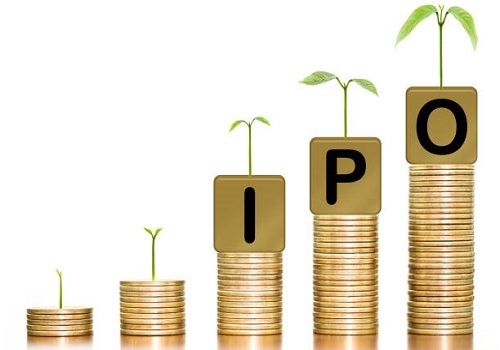
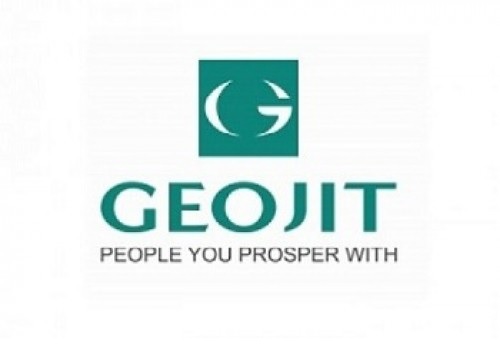
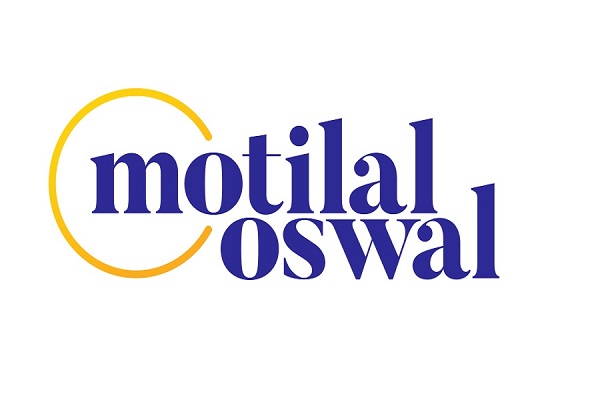

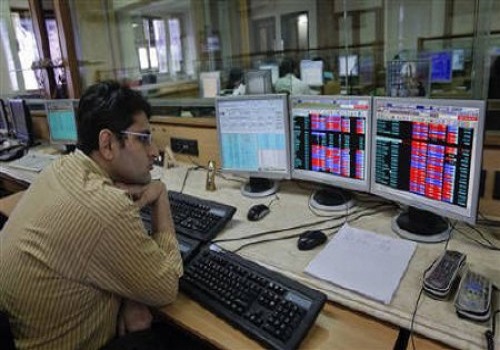
.jpg)


